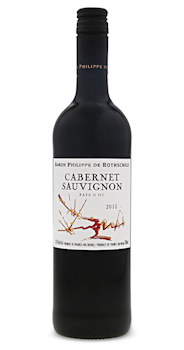You’ll find a wide selection of the best wines to use for cooking from Jacques Scott Wines and Spirits. But if this is your first time doing so, you might not know which wines go with which dishes. Here’s a guide to choosing the right wine for cooking and knowing when to reach for red versus white.
Understanding the Basics: Red Wine vs. White Wine in Cooking
The key to cooking with wine is understanding how each type interacts with the ingredients in your dish. Red wines are typically heavier and have bolder flavors, with notes of dark fruits, earthiness, and sometimes spices. This makes red wine ideal for heartier dishes and sauces that benefit from these rich flavors.
White wines, on the other hand, are generally lighter and more acidic, with flavors that often include citrus, apple, pear, and floral notes. White wine’s acidity can add brightness to a dish, making it an excellent choice for lighter ingredients like fish, chicken, and green vegetables.
When to Use Red Wine in Cooking
Rich, Meaty Dishes
Red wine is a natural choice for dishes with red meats, such as beef stews, braised lamb, or coq au vin. The bold flavors of red wine enhance the taste of the meat, while the wine’s tannins help break down the protein, making it tender and flavorful. Classic dishes like beef bourguignon rely on red wine’s depth to create a sauce that’s rich, complex, and perfect for cold-weather comfort food.
Tomato-Based Sauces
Tomato-based sauces, such as marinara or Bolognese, pair well with red wine due to the natural acidity in tomatoes. Adding a splash of red wine can add depth and complexity to the sauce, balancing the acidity of the tomatoes and complementing the savory flavors. Choose a lighter red like Pinot Noir or Sangiovese for tomato sauces, as these won’t overpower the dish.
Hearty Vegetable Dishes
For dishes with hearty vegetables like mushrooms, eggplant, or root vegetables, red wine can bring out the earthiness and richness of these ingredients. Mushrooms, in particular, have a natural umami flavor that pairs wonderfully with red wine, adding depth and enhancing the overall flavor profile. Try adding red wine to a mushroom risotto or a vegetable stew to create a rich, savory dish.
When to Use White Wine in Cooking
Light, Delicate Proteins
White wine is perfect for cooking lighter proteins like chicken, fish, and shellfish. Its acidity enhances the natural flavors of these ingredients without overwhelming them. For example, white wine is a key ingredient in dishes like chicken piccata or poached fish, where it creates a delicate, balanced sauce.
Cream-Based Sauces
When making cream-based sauces, white wine can add acidity and complexity without darkening the sauce or overpowering it. The acidity in white wine balances the creaminess, adding a subtle layer of flavor to dishes like pasta Alfredo, risottos, and white wine beurre blanc.
Vegetable and Herb-Driven Dishes
White wine works well in vegetable-based dishes, especially when paired with green vegetables like asparagus, artichokes, or green beans. The acidity and subtle fruit flavors of white wine complement fresh herbs and green vegetables, making it an ideal choice for spring and summer recipes. Add a splash of white wine to a sauté of green beans or to a vegetable risotto to elevate the flavors without overpowering them.
Find out more about the best wines to use for cooking by using our online contact form or calling Jacques Scott Wines and Spirits at (345) 949-0277.
